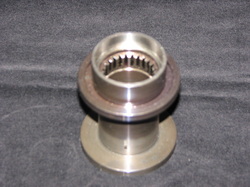
The cost of quality is often times misunderstood. It is not the cost of what it takes to produce a quality product, it is the additional cost for any quality related events that occur after the parts have been through the manufacturing process. Manufacturers strive to deliver the highest quality products to their customers, but need to fully understand how the "Cost of Quality" applies to the process.
If product is moved through the process with no variations or issues involving part quality, then the cost of quality remains as quoted. However, if during or at the end of the process of manufacture the parts have to be redone or reworked then the cost of quality rises.
There are some very basic examples that would cause an additional cost for quality... these are:
-- Reworking parts to meet drawing requirements
-- Retesting components
-- Re-processing parts through a plating process
There are many more occurrences that can affect part costs, but this gives you an idea of what can affect the cost of quality. If steps are taken to continuously improve processes and reduce time spent on overhead tasks such as inspection, then you are well on your way to effectively maintaining your "cost of quality".
If product is moved through the process with no variations or issues involving part quality, then the cost of quality remains as quoted. However, if during or at the end of the process of manufacture the parts have to be redone or reworked then the cost of quality rises.
There are some very basic examples that would cause an additional cost for quality... these are:
-- Reworking parts to meet drawing requirements
-- Retesting components
-- Re-processing parts through a plating process
There are many more occurrences that can affect part costs, but this gives you an idea of what can affect the cost of quality. If steps are taken to continuously improve processes and reduce time spent on overhead tasks such as inspection, then you are well on your way to effectively maintaining your "cost of quality".
 RSS Feed
RSS Feed